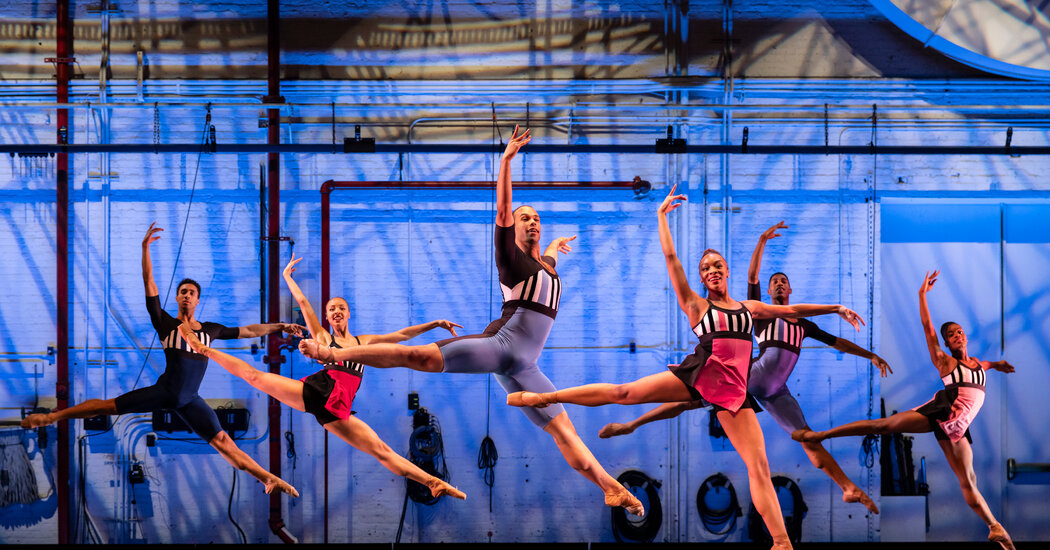It was, as Robert Garland said from the stage, a momentous occasion for him. Greeting the crowd at his first New York City Center season as the artistic director of Dance Theater of Harlem, he spoke warmly of the company’s co-founder: “Arthur Mitchell was my mentor, my hero, and he’s watching down from upstairs saying, ‘Get it right, Robert.’”
The line earned laughs, but had the ring of truth — Mitchell was an exacting director. And on Thursday, Garland showed that he was getting some things right: Dance Theater, now in its 55th season, has a vintage kind of glow. It isn’t like it was in the robust old days, but it is refreshed. The company, along with its dancers, seems to be more sure of itself: It’s growing into a sense of style.
Honoring Mitchell was a reminder of why Dance Theater, born after the assassination of the Rev. Dr. Martin Luther King Jr. in 1968, started in the first place. Along with showcasing the transformative power of ballet, Garland writes in the program, Mitchell used Dance Theater as a means for social justice in part by way of its repertoire: George Balanchine ballets were performed alongside works by Black choreographers like Geoffrey Holder. That considered, caring curation remains.
While there is no Garland premiere this season — he wants to get to know his dancers better before he creates a new ballet for them — Thursday’s program featured his charming, upbeat “Nyman String Quartet No. 2,” which braids social dance with classical ballet. Nyman’s music still drones on, but since 2019, when the ballet premiered, the dancers have found greater ease and stamina as they weave through in its jaunty combinations of dance forms. And it made an added impression sharing the program with “Pas de Dix” (1955), Balanchine’s homage to Marius Petipa and his three-act “Raymonda” (1898).
A company premiere, “Pas de Dix,” set to Alexander Glazunov’s lively score, was staged by the former New York City Ballet principal Kyra Nichols. Watching the dancers, a lead couple and an ensemble of eight, perform “Pas de Dix” was, in its best moments, like seeing glimpses of Nichols gliding through space: technical and free with in-the-moment musicality. With such a tinny recording (none of the evening’s music was played live), this was a feat.
As a dancer, Nichols seemed to breathe through the music; in “Pas de Dix,” her cast moves with gumption. Kamala Saara and Kouadio Davis, the leads, do well enough — especially Saara, whose command and control contrast beautifully with her expressive arms and hands, which frame her face while shaping the air. But the ballet is exposing, both in manner and physicality; organizing the body — soft and open on top and rock solid on the bottom — is a fierce balancing act.
These dancers need to perform it on repeat so that they find their individuality in it — essentially, wearing the ballet instead of letting it wear them. But it’s a start. The original female lead was the formidable Native American ballerina Maria Tallchief, a favorite of Mitchell’s; her elegance and verve, even in photographs, are tremendous. “Pas de Dix” is a meaningful follow-up to the company’s performances last season of Balanchine’s “Allegro Brillante” (1956), another bravura ballet that featured Tallchief.
Ballet can refer to many things in this day and age, but to perform Balanchine well is still what it’s all about — especially for this company, which was known, particularly in its early days, for dancing his ballets and dancing them well.
In the New York premiere of Robert Bondara’s “Take Me With You,” set to the Radiohead song “Reckoner,” Amanda Smith — in tight black shorts with a white button-down tied in a knot above her waist — enters the darkened stage clapping her hands. Elias Re, costumed the same with his shirt untied, stands behind her, snapping his fingers before spinning Smith in his arms, sharply at first and then more gingerly.
As the choreography flickers between sharp and dreamy, the dancers — sleek yet still somehow vulnerable — are swept along by the music. Bondara, a Polish choreographer, makes room for give and take. Even as the dancers roll on the floor or grab each other’s limbs, you get the sense that this is a partnership.
When Smith bends over Re’s chest and taps her fingers on his torso to the beat of the music, he doesn’t flinch but arches backward. “Take Me With You” is both unstuffed and unsentimental: There may be darkness swirling around the world, but they have each other, strangely and endearingly like a modern-day Nick and Nora.
While long, Thursday’s program had range. It ended with William Forsythe’s “Blake Works IV (The Barre Project),” part of a series of dances set to the electronic music of James Blake. Created for Dance Theater in 2023, it features a ballet barre at the back of the stage, which operates first as a base and then as a launching platform for dancers, in gleaming purple, who perform contained barre exercises before peeling off into the stage’s wider space. This Forsythe work, you can tell, has been good for them all. They wear it. They hear its propulsive beat, and they have made it their own.
Dance Theater of Harlem
Through Sunday at New York City Center, Manhattan; nycitycenter.org.


